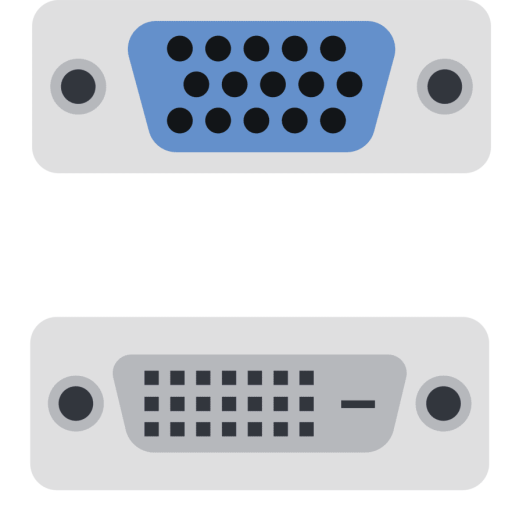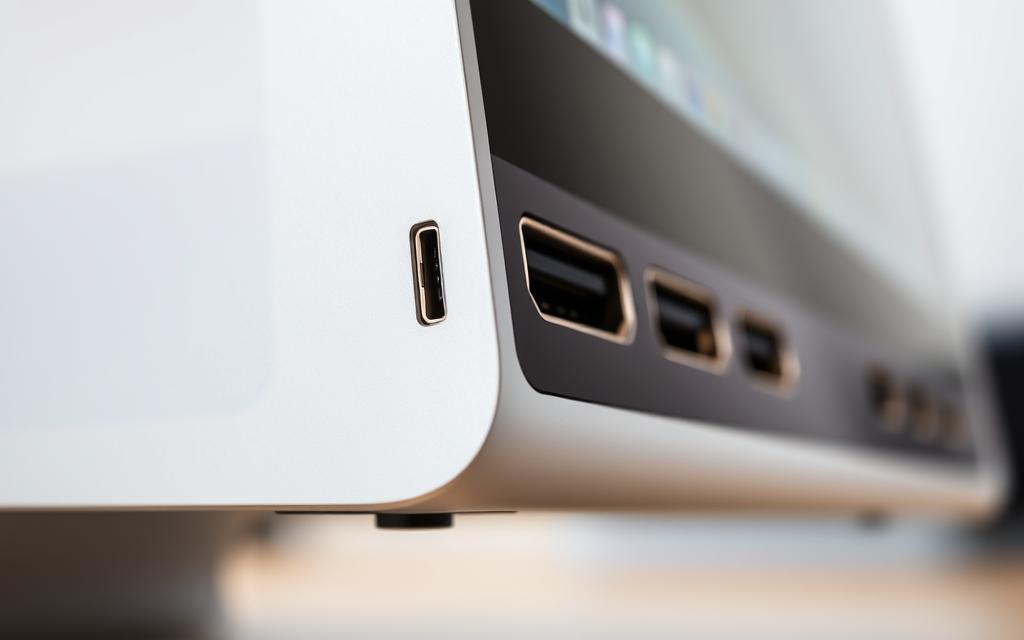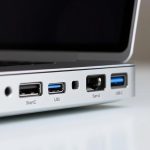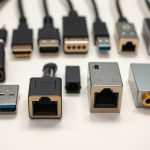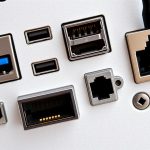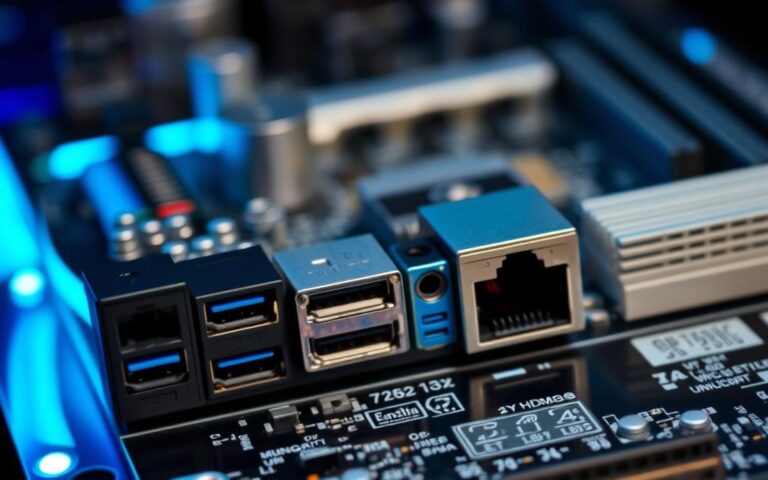Do Mac Computers Have HDMI Ports: What You Need to Know
Understanding the HDMI connectivity options on Mac models is crucial for users who need to connect their computers to external displays, TVs, and presentation equipment. The presence of HDMI ports varies across the Mac product lineup, with some models offering native HDMI connectivity while others require adapters.
Recent Mac models, such as the MacBook Pro, Mac mini, Mac Studio, and Mac Pro, have built-in HDMI ports that support high-definition video and multi-channel audio. According to Apple Support, these ports can handle up to 8K resolution at 60Hz and 4K resolutions with refresh rates from 30Hz to 240Hz. For older models or those without native HDMI support, adapters like the Apple USB-C Digital AV Multiport Adapter can provide HDMI connectivity.
Understanding Mac Connectivity Options
Understanding the connectivity options on Mac computers is crucial for users to maximize their productivity and workflow efficiency. The port configuration on Macs has undergone significant changes over the years, reflecting both technological advancements and Apple’s design philosophy.
The Evolution of Mac Ports
The evolution of ports on Mac computers has been marked by a transition from a diverse array of ports to a more streamlined selection. Early Mac models featured various ports including FireWire, USB-A, and Mini DisplayPort. However, with the introduction of MacBook Pro models in 2016, Apple shifted towards Thunderbolt 3/USB-C ports, significantly reducing the variety of ports. This change was met with controversy among professional users who relied on direct connections to external displays and peripherals.
| Year | Mac Model | Port Configuration |
|---|---|---|
| Before 2016 | Various Mac Models | FireWire, USB-A, Mini DisplayPort, etc. |
| 2016 | MacBook Pro | Primarily Thunderbolt 3/USB-C |
| 2021 | 14-inch and 16-inch MacBook Pro | Thunderbolt Ports, HDMI, SD Card Slot |
Why Port Selection Matters for Users
The selection of ports on a Mac directly impacts users’ workflow efficiency and connectivity options. Professional users, in particular, require diverse port options for connecting to specialized equipment and multiple displays. The reintroduction of HDMI ports and SD card slots in the 2021 MacBook Pro models addressed some of these needs, providing more flexibility for users. As noted by industry experts, “The right ports can significantly enhance a user’s productivity by reducing the need for adapters and dongles.”
“The right ports can significantly enhance a user’s productivity by reducing the need for adapters and dongles.” – Industry Expert
Understanding the available ports on different Mac models is essential for choosing the right computer that meets specific connectivity needs. Whether it’s for professional use or general purposes, the port configuration plays a crucial role in determining the overall user experience.
Do Mac Computers Have HDMI Ports?
The presence of HDMI ports on Mac computers is a common inquiry among users seeking to connect their devices to external displays. The answer varies based on the Mac model and its generation.
The Short Answer
Some Mac computers come with built-in HDMI ports, while others require adapters for HDMI connectivity. Models with HDMI ports include the 14-inch and 16-inch MacBook Pro models from 2021 or later, certain older MacBook Pro models, Mac mini, Mac Studio, and Mac Pro.
Benefits of Built-in HDMI Ports
Having a built-in HDMI port offers several benefits, including direct connectivity to displays without needing adapters, reliable connections for presentations, and compatibility with a wide range of monitors and TVs. Recent Mac models support advanced features like 4K resolution and multi-channel audio output.
Limitations of Mac HDMI Connections
Despite the advantages, Mac HDMI connections have limitations, notably the HDMI 2.0 specification on some models, which affects maximum bandwidth and may restrict high-end display setups. Understanding these capabilities helps users determine if their Mac’s HDMI port meets their display needs.
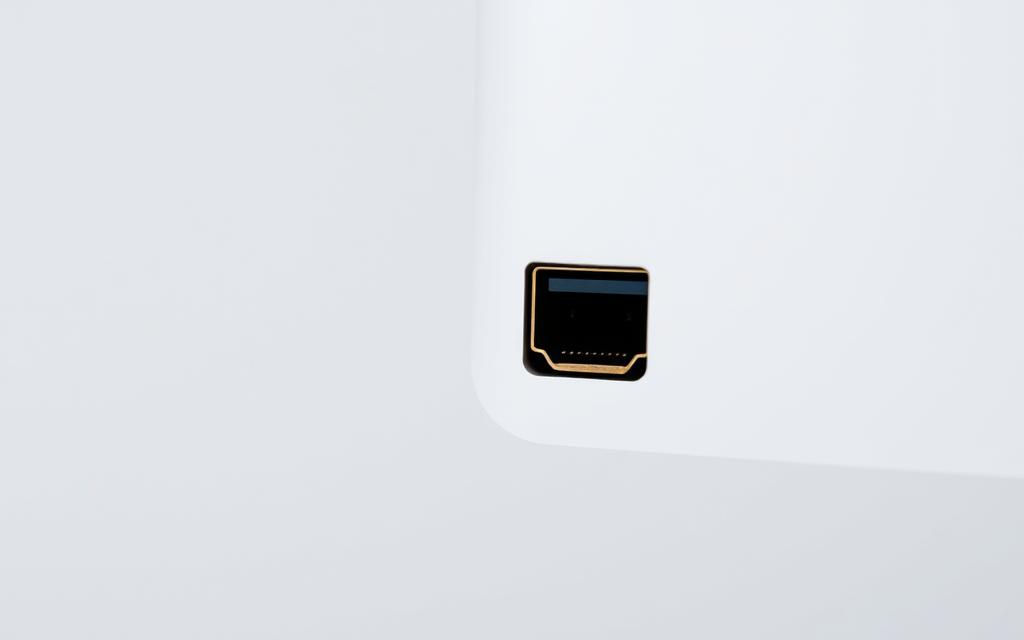
MacBook Pro Models with HDMI Ports
Recent MacBook Pro models have reintroduced HDMI ports, enhancing user experience. This change reflects Apple’s responsiveness to user feedback regarding connectivity options.
14-inch and 16-inch MacBook Pro (2021-Present)
The redesigned 14-inch and 16-inch MacBook Pro models introduced in October 2021 feature an HDMI port alongside other connectivity options like three Thunderbolt 4 ports, an SD card slot, and MagSafe. The HDMI port is HDMI 2.0, supporting 4K displays at 60Hz.
- These models support up to two external displays at 6K resolution with the M1 Pro chip.
- The M1 Max chip supports up to four external displays at 6K resolution.
Older MacBook Pro Models (2012-2015)
Prior to the 2016 redesign, MacBook Pro models from 2012-2015 included HDMI ports. These older models supported HDMI 1.4 specifications, typically allowing for 4K output at 30Hz.
| Model | HDMI Version | Max Resolution/Refresh Rate |
|---|---|---|
| 2012-2015 MacBook Pro | HDMI 1.4 | 4K @ 30Hz |
| 2021-Present MacBook Pro | HDMI 2.0 | 4K @ 60Hz |
Mac Desktop Computers with HDMI Ports
Apple’s desktop Mac lineup has consistently included HDMI ports across all current models, making them well-suited for direct connection to external displays without adapters.
This consistency across the desktop lineup ensures that users can easily connect their Macs to external monitors, TVs, and other display devices.
Mac Mini HDMI Capabilities
The Mac mini has featured an HDMI port since models introduced in 2010 or later. The latest Mac mini models, introduced in 2023 or later with M2 Pro, M4, or M4 Pro chips, support impressive 8K resolution at 60Hz through their HDMI ports.
Mac Studio HDMI Features
The Mac Studio, introduced in 2022 or later, includes an HDMI port alongside its extensive Thunderbolt connectivity options. Models introduced in 2023 or later support up to 8K at 60Hz output.
Mac Pro HDMI Connectivity
The Mac Pro, introduced in 2013 or later, includes an HDMI port. The latest 2023 models support 8K at 60Hz output, complementing its extensive PCIe expansion capabilities for professional video and 3D workflows.
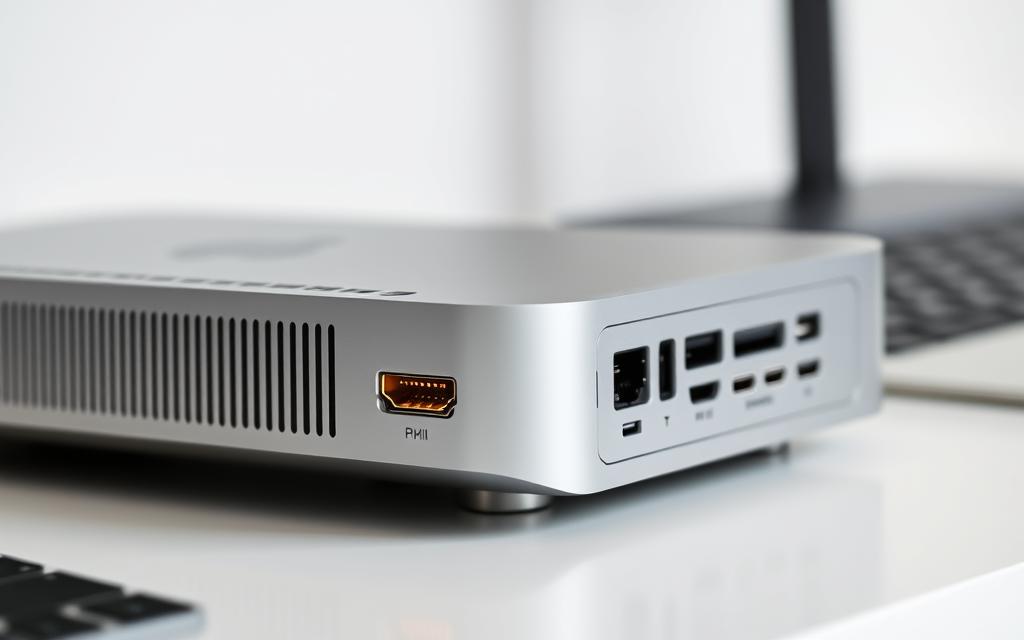
MacBook Models Without HDMI Ports
Apple’s MacBook lineup includes several models that lack built-in HDMI ports. This absence can be attributed to Apple’s shift towards more streamlined and versatile port configurations.
MacBook Air Connectivity Options
The MacBook Air, across its various generations, has never featured a built-in HDMI port. Instead, it relies on Thunderbolt/USB-C connectivity. Current models come equipped with two Thunderbolt/USB4 ports, allowing users to connect to external displays through appropriate adapters or docking stations.
13-inch MacBook Pro (2016-2020) Port Configuration
The 13-inch MacBook Pro models from 2016 through 2020 also lack built-in HDMI ports, representing a period where Apple’s design philosophy emphasized minimalism. These models featured either two or four Thunderbolt 3 ports, requiring users to utilize adapters for HDMI connectivity. The Apple USB-C Digital AV Multiport Adapter is a popular solution that provides HDMI output alongside other ports.
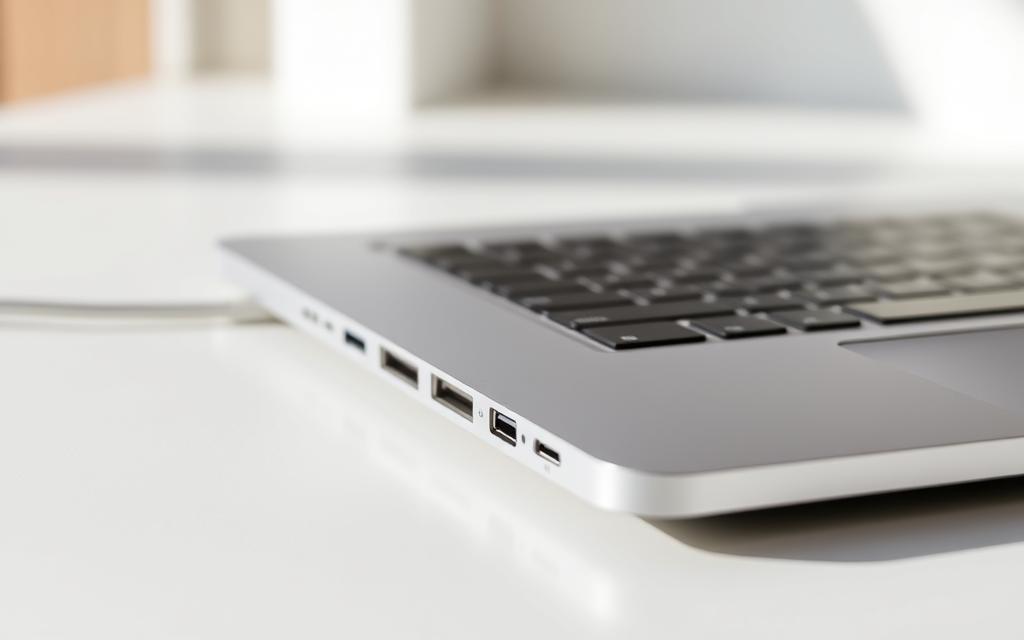
HDMI Technical Specifications on Mac Computers
Understanding the technical specifications of HDMI on Mac computers is crucial for optimal performance. The capabilities of HDMI ports vary significantly across different Mac models and generations.
Resolution and Refresh Rate Support
Newer Mac models introduced in 2023 and later support advanced display resolutions through their HDMI ports. For instance, compatible MacBook Pro, Mac mini, Mac Studio, and Mac Pro models can output up to 8K at 60Hz. Some models also support 4K resolution at refresh rates up to 240Hz, making them suitable for gaming and high-frame-rate video work.
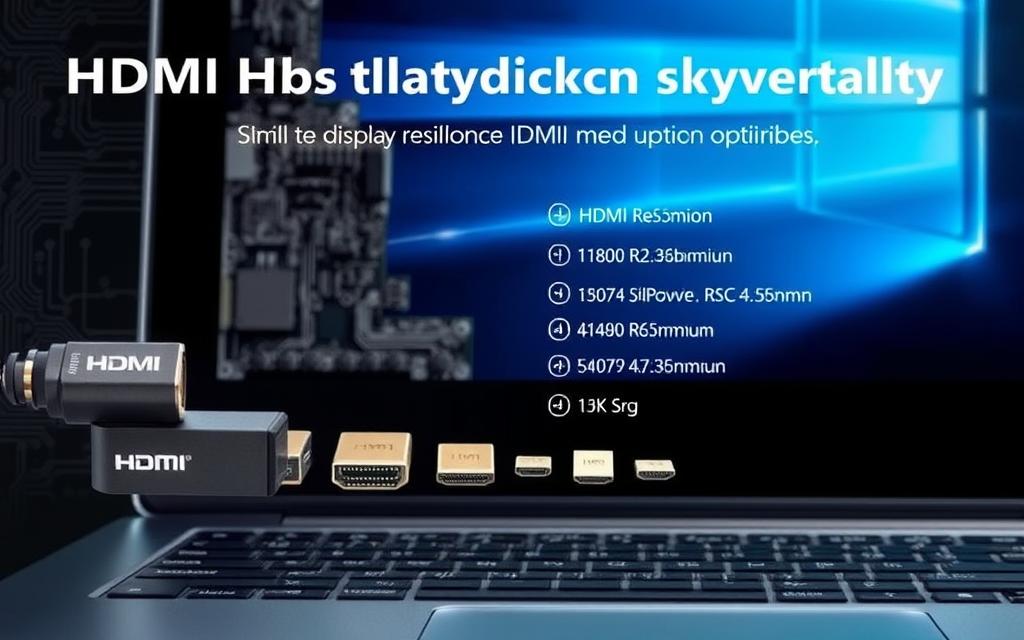
| Mac Model | Max Resolution | Refresh Rate |
|---|---|---|
| MacBook Pro (2023+) | 8K | 60Hz |
| Mac mini (2023+) | 8K | 60Hz |
| Mac Studio (2023+) | 8K | 60Hz |
| Mac Pro (2023+) | 8K | 60Hz |
Audio Capabilities via HDMI
Most Mac HDMI ports support advanced audio formats, including 8-channel/24-bit audio at 192kHz, Dolby Surround 5.1, and traditional stereo output. However, some Mac computers may not support multi-channel audio, so it’s essential to check the tech specs for your specific model.
Connecting to HDMI Displays Without a Native Port
The absence of a native HDMI port on some Mac models doesn’t limit their ability to connect to HDMI displays. Various adapter solutions enable Mac users to connect their devices to HDMI displays, projectors, and televisions.
Thunderbolt to HDMI Adapters
For Macs equipped with Thunderbolt 3, Thunderbolt 4, or Thunderbolt 5 ports, Thunderbolt to HDMI adapters offer a viable solution. The Apple USB-C Digital AV Multiport Adapter is a popular choice, supporting up to 4K resolution at 60Hz.
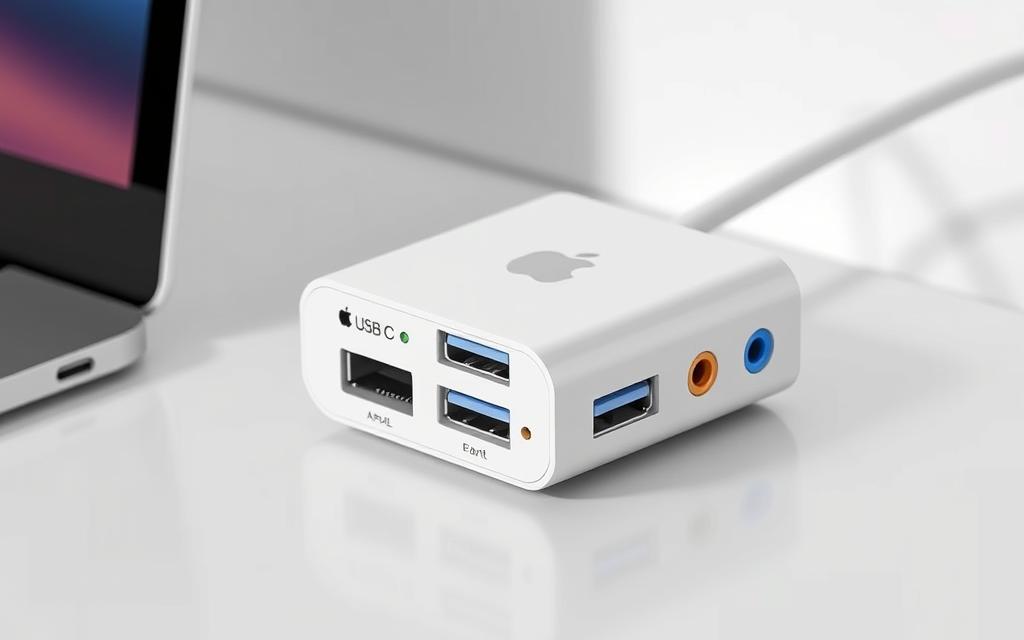
USB-C to HDMI Solutions
Macs with USB-C ports can utilize USB-C to HDMI adapters for connecting to HDMI displays. Third-party manufacturers like Belkin, Anker, and CalDigit offer a range of options, often with additional ports for enhanced connectivity.
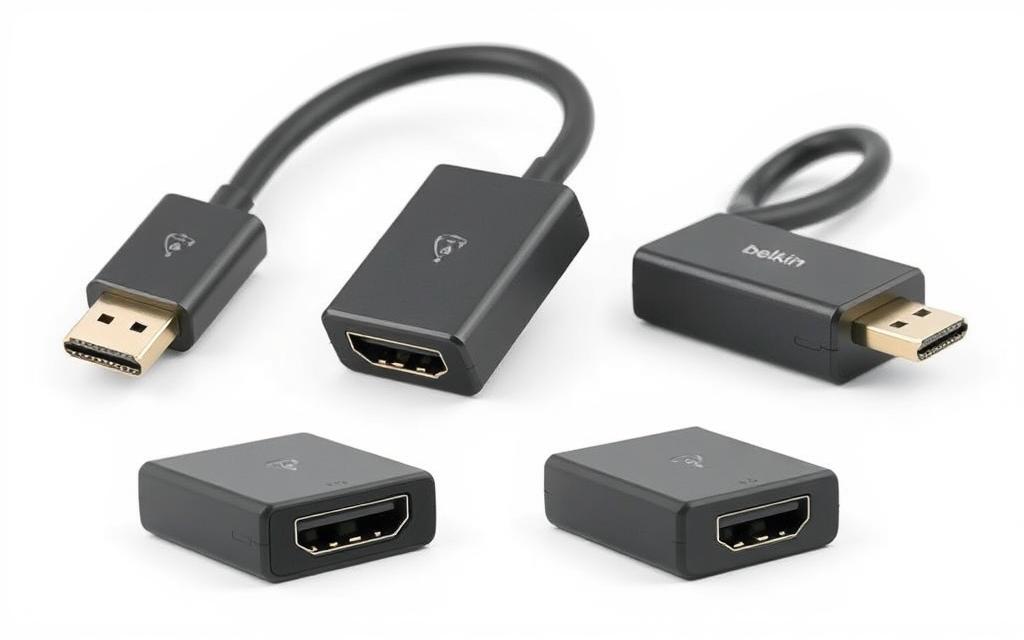
When selecting an adapter, consider the maximum resolution and refresh rate required for your display. Advanced docking stations can provide multiple HDMI outputs from a single Thunderbolt connection, enabling multi-display setups.
Troubleshooting Mac HDMI Connections
When your Mac’s HDMI connection isn’t working as expected, several troubleshooting steps can help. HDMI connections between Macs and displays can sometimes experience issues that require troubleshooting to resolve.
Common HDMI Connection Issues
One common problem is display recognition failure, where the Mac doesn’t detect the connected HDMI display. This can often be resolved by disconnecting and reconnecting the HDMI cable, restarting the Mac, or trying a different HDMI cable.
- Video that extends beyond the borders of the screen (overscan) or appears with black borders (underscan) can be adjusted either in macOS display settings or on the TV/projector itself.
- HDCP (High-bandwidth Digital Content Protection) errors may occur when playing protected content, especially if the Mac goes to sleep during playback—quitting and reopening the media application typically resolves this issue.
Fixing Display Recognition Problems
If your Mac recognizes the external display but shows no image, checking System Settings > Displays to ensure the correct resolution and refresh rate are selected can often resolve the issue.
| Issue | Solution |
|---|---|
| No image on external display | Check System Settings > Displays for correct resolution and refresh rate |
| Audio not working through HDMI | Ensure HDMI device is selected in System Settings > Sound |
| Display flickering or signal dropouts | Use a high-quality, properly shielded HDMI cable |
For persistent connection issues, resetting the Mac’s SMC (System Management Controller) and NVRAM/PRAM can sometimes resolve stubborn display recognition problems, thus improving overall performance. If you’re connecting from a Mac mini, disconnect any audio device from your computer’s jack to prioritize HDMI audio output.
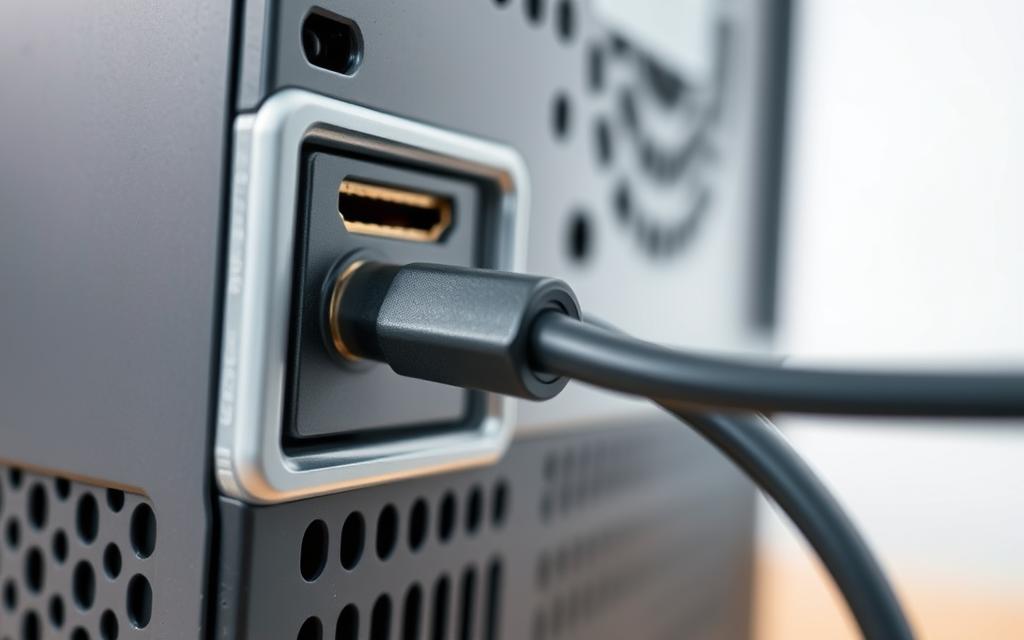
Future of Mac Connectivity: HDMI and Beyond
The landscape of Mac connectivity is changing, with HDMI and Thunderbolt leading the way. Apple’s approach to ports and connectivity continues to evolve, balancing versatility and specialization in future Mac models.
Apple’s Port Strategy for Upcoming Models
Recent Mac models have reintroduced HDMI ports to professional devices like MacBook Pro, Mac Studio, and Mac Pro. This trend is expected to continue, with HDMI-CEC support now available in models like Mac Studio with M4 Max or M3 Ultra, introduced in 2025.
Thunderbolt 4/5 vs. HDMI for Display Connections
While HDMI remains compatible with consumer displays, Thunderbolt 4/5 offers superior bandwidth (up to 120 Gbps) and the ability to daisy-chain multiple displays. A comparison of the two technologies is shown below:
| Feature | Thunderbolt 4/5 | HDMI |
|---|---|---|
| Bandwidth | Up to 120 Gbps | Up to 48 Gbps (HDMI 2.1) |
| Daisy-Chaining | Supported | Not Supported |
| Compatibility | Professional Displays | Consumer and Professional Displays |
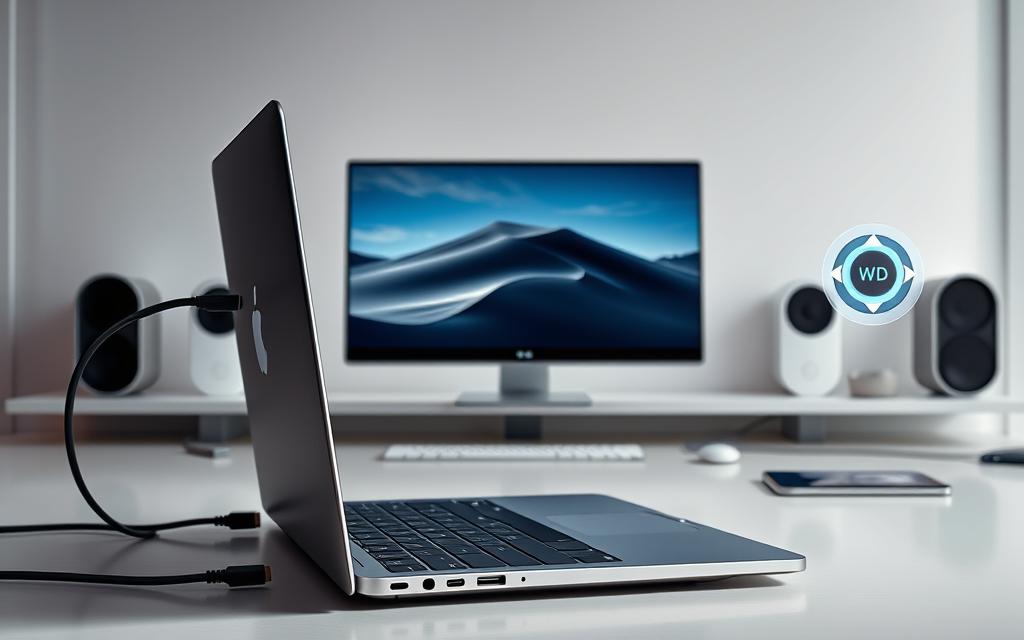
Conclusion
Ultimately, choosing the right Mac model depends on your HDMI connectivity needs. The availability of HDMI ports varies across Mac computers, with models like the MacBook Pro, Mac mini, Mac Studio, and Mac Pro offering native HDMI connectivity. For other models, adapters provide a reliable solution. Considering your display needs is crucial when selecting a Mac, as Apple’s connectivity options continue to evolve with advancements in display technology.
FAQ
Which Mac models come with HDMI ports?
Most modern Mac models, including the 14-inch and 16-inch MacBook Pro (2021-Present), Mac Mini, Mac Studio, and Mac Pro, feature HDMI ports for connecting to external displays.
Can I connect my Mac to an HDMI display without an HDMI port?
Yes, you can use Thunderbolt to HDMI adapters or USB-C to HDMI solutions to connect your Mac to an HDMI display, even if it doesn’t have a native HDMI port.
What are the technical specifications for HDMI on Mac computers?
Mac computers with HDMI ports generally support resolutions up to 8K at 60Hz and refresh rates up to 240Hz, depending on the model and display capabilities. They also support audio output via HDMI.
Why is my Mac not recognizing my HDMI display?
Common issues include loose connections, incorrect display settings, or incompatible adapters. Try restarting your Mac, checking the HDMI cable, and ensuring the display is set to the correct input.
Can I use HDMI to connect multiple displays to my Mac?
Yes, but the number of displays you can connect depends on your Mac model and its graphics processing capabilities. Some Mac models support multiple displays via HDMI and Thunderbolt ports.
Are there any limitations to using HDMI on Mac computers?
While HDMI is a versatile connection standard, Mac computers may have limitations on the maximum resolution, refresh rate, or audio format supported via HDMI. Check your Mac’s specifications for details.
How do I identify the ports on my Mac?
You can check the ports on your Mac by referring to its documentation or looking for icons next to the ports. Thunderbolt ports, for example, are typically marked with a lightning bolt icon.
Will future Mac models continue to include HDMI ports?
Apple’s port strategy is evolving, with a focus on Thunderbolt and USB-C. While current Mac models feature HDMI ports, future models may rely more on Thunderbolt 4 or 5 for display connections.
